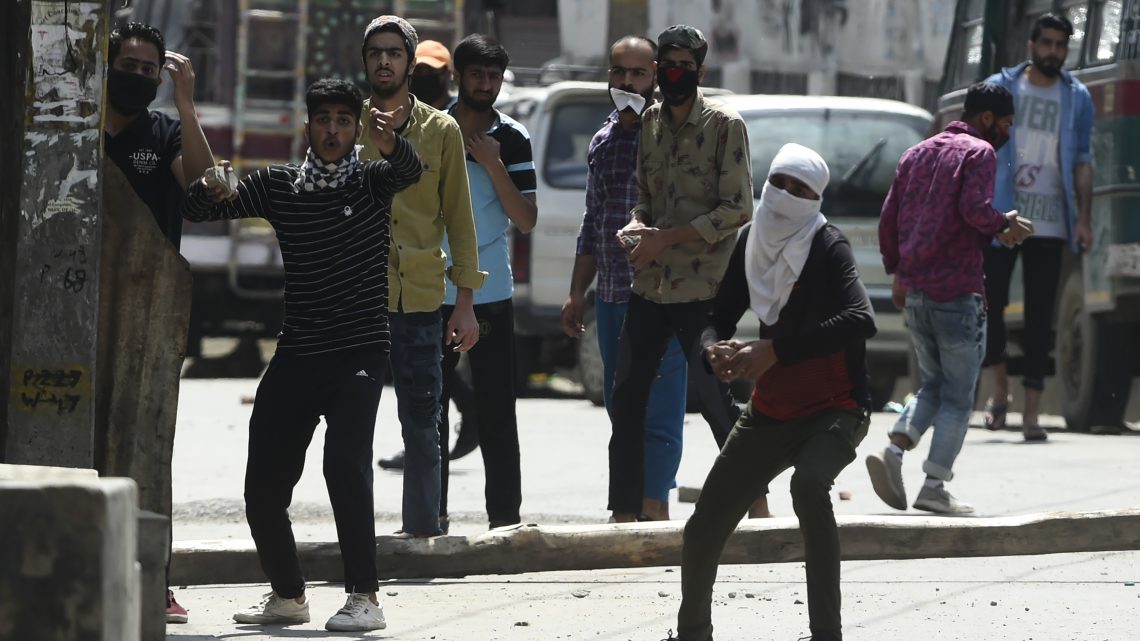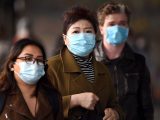
Kashmir Has Been Under Siege for a Whole Year. Here’s a Timeline.
July 31, 2020Jammu and Kashmir has been the subject of a territorial dispute between India, Pakistan and China since the mid-20th century. This region sits atop India’s most northern point, and was until 2019 India’s only Muslim-majority state, which granted it a separate flag and constitution. However, on August 5 last year, India passed a resolution to extend control over the area, removing its autonomy and statehood.
Now, one year later, India’s government plans to mark the anniversary of this abrogation with a celebration they’re calling “Ek Bharat, Ek Atma Bharat (One India campaign) in the Union Territory of Jammu and Kashmir (J&K). The country’s ruling party is calling the event “a historic day.”
It has however been a tumultuous year for the Kashmiris.
In 2019, India’s government labelled their move a “complete integration” of Jammu and Kashmir (J&K) into the Indian Union. It reasoned that this would end a three-decade-long militant separatist movement and bring development to J&K.
Kashmiris, however, saw their integration as a threat to the state’s ethnic character, and a milestone on the road to the realisation of the BJP’s dream of a fundamentally Hindu nation.

The move was part of Indian Prime Minister Narendra Modi’s many controversial decisions after his landslide reelection last year. His other controversial move came with the passing of the Citizenship Amendment Act (CAA) in December 2019. The law cleared the pathway to citizenship for individuals belonging to six religions—except Islam—from neighbouring nations. It led to nationwide protests, communal riots and the mass detention of anti-CAA protesters.
The abrogation led to breaking up of J&K into two territories directly administered by the Government of India: one that combines Hindu-majority Jammu and Muslim-majority Kashmir, and Buddhist-majority Ladakh.
The move electrified Modi’s supporters across the country, including the Kashmiri Pandits who were forced out of the Kashmir valley in the 1990s when Muslim militants burned their homes, reportedly displacing over 250,000 people and driving them out of the state. An “excited” BJP leader stirred controversy when he said they will now be able to “get married to fair girls from Kashmir”.
While the rest of India celebrated, debated and protested they changes, Kashmir was inundated with security personnel and placed under a communication blockade that has still hasn’t lifted. For this reason, the region has remained largely silent. Here, we look at the key moments of the past year:
August 3, 2019: Thousands of students, tourists and pilgrims were ordered to leave Indian-administered Kashmir after officials sounded a “terror threat” on the India-Pakistan border. In the meantime, around 45,000 troops are deployed, along with barricades and riot control vehicles.
August 4: In response to the tensions on the ground, 18 mainstream state political leaders came together and vowed to maintain a united front to protect the autonomy and special status of the state.
Later that night, many political leaders from that group—including former chief ministers Mehbooba Mufti, Omar Abdullah and president of the Peoples Conference party, Sajad Lone—were placed under house arrest. Section 144 of the Indian Penal Code—which prevents a gathering of three or more people—was imposed in the city of Srinagar, along with a partial suspension of mobile internet services.
August 5: Home Minister Amit Shah moved the resolution to revoke Article 370 and Article 35-A of the Constitution in the Upper House of the Indian Parliament in New Delhi. The announcement led to an uproar by Opposition members. Some tore their clothes, while others tore copies of the Indian Constitution. Kashmir Valley was forced into silence as a complete communication blackout was imposed.
August 9: A series of protests broke out in Srinagar. Reuters reported Indian police using tear gas and pellets to fight back at least 10,000 people. On August 10, Vasudha Gupta, spokesperson for the Ministry of Home Affairs, called the news reports “completely fabricated and incorrect”.
August 29: International media outlets report mass abuse of Kashmiris by the security forces. The BBC reported that several villagers faced beatings, torture, pellet gun attacks and night raids. The Indian Army called the claims “baseless and unsubstantiated”.
September 6: News agency Reuters reported the arrest of nearly 4,000 people since August 5 in one of the India-administered region’s “biggest crackdowns”. While the basis of arrest was not clear, an Indian official told Reuters on condition of anonymity that many were being held under the Public Safety Act (PSA). The Act allows the state government to detain a person up to two years without trial. By now, more than 200 politicians were in jail, along with over 100 leaders and activists from an umbrella organisation of pro-separatist political groups. Amnesty International India called the invocation of PSA a “blatant abuse of the law by the Indian government.” Landline telephonic communication was restored in central, south and northern Kashmir districts. Still no internet or cell phone lines.
September 22: Amid the unrest, PM Modi visited the United States and met President Donald Trump for a ‘Howdy Modi’ rally in Houston. Five days later, he addressed the 74th session of the UN General Assembly and said, “India’s message to the world is peace and harmony”. On the sidelines of the same event, President Trump met Pakistan Prime Minister Imran Khan and said he hoped the two countries “came together” on Kashmir. PM Khan, on the other hand, warned India of bloodbath once India lifts curfew in Kashmir.
October 14: Some mobile phone services were restored, but there are continued reports of violence in the form of grenade attacks.
October 23: India held local body elections in Srinagar amid boycotts by Opposition parties. Regional political parties termed the elections “undemocratic” in the light of detention of their colleagues.
October 28: Around 23 Members of the European Parliament made a “private visit” to Kashmir—the first since August 5. The visit drew criticism over the fact that over a third of the delegation were from far-right parties in Europe. It also came at a time when Indian political leaders and journalists were denied access to the state. The EU Parliament stated that it did not endorse the visit. Five migrant labourers from the eastern state of West Bengal were shot dead by terrorists in south Kashmir.
November 1: German Chancellor Angela Merkel, while on a trip to New Delhi, said the situation in Kashmir is “not sustainable and must improve.”
December 18: The Kashmir Chamber of Commerce and Industry, the region’s main trade organisation, reported a loss of $2.4 billion since August 5.
January 10, 2020: The Supreme Court of India said an indefinite internet shutdown in Kashmir is illegal. Four detained political leaders were released.
March 13: Prominent politician and former Jammu and Kashmir chief minister Farooq Abdullah was released from detention. His son, Omar Abdullah, also a former chief minister, was released weeks later.
March 21: Amid COVID-19 outbreak and an impending nationwide lockdown, United Nations special rapporteur David Kaye said Kashmir’s internet shutdown “cannot be justified”. As the world buckled under the pandemic, Kashmiris struggled to get reliable information about the novel coronavirus.
April 1: The Indian government rolled out new definitions of domicile for Jammu and Kashmir. It states that a person residing there for at least 15 years will now be eligible to be a permanent resident of the newly-designated Union Territory. It also grants domicile to those who studied in the state for seven years, and did their class 10 or 12 from a school there. Kashmiris criticise the law and call it “textbook Israeli-model”.
April 21, 2020: Police booked two Kashmiri journalists under the Unlawful Activities Prevention Act, for their coverage of the post-abrogation conflict and alleged “fake news”.
May 5: Three Kashmiri photojournalists— Dar Yasin, Mukhtar Khan and Channi Anand—won the Pulitzer Prize in ‘Feature Photography’ category for their coverage of Jammu and Kashmir. Some BJP leaders criticised the award and said the photographers’ work depicted “anti-India sentiments”. Mobile internet services at 2G speed restored in the state, except the restive Pulwama and Shopian districts.
June 11: Reports of community transmission of COVID-19 emerged from the state. The state crossed the 15,000-mark in COVID-19 positive cases in 145 days on July 22. Kashmiri doctors alleged harassment and assault by security forces.
July 30: Government of India officials stated that they released 90 percent of 6,605 persons who were taken into preventive custody since August 5. Those include political heads, sympathisers of militant outfits, stone-pelters and separatists. News reports state that nearly half of total inmates in a South Kashmir jail, which also includes political prisoners, tested positive for COVID-19. Some political leaders allege that those not formally in detention centres were detained illegally in their own homes. In a video dated July 30, member of the Congress party and former Union Minister Saifuddin Soz was dragged away by security forces while telling the press about his illegal detention.
The Jammu and Kashmir administration also decided to continue internet restrictions to 2G on postpaid sim cards for security reasons.
Follow Pallavi Pundir on Twitter.


